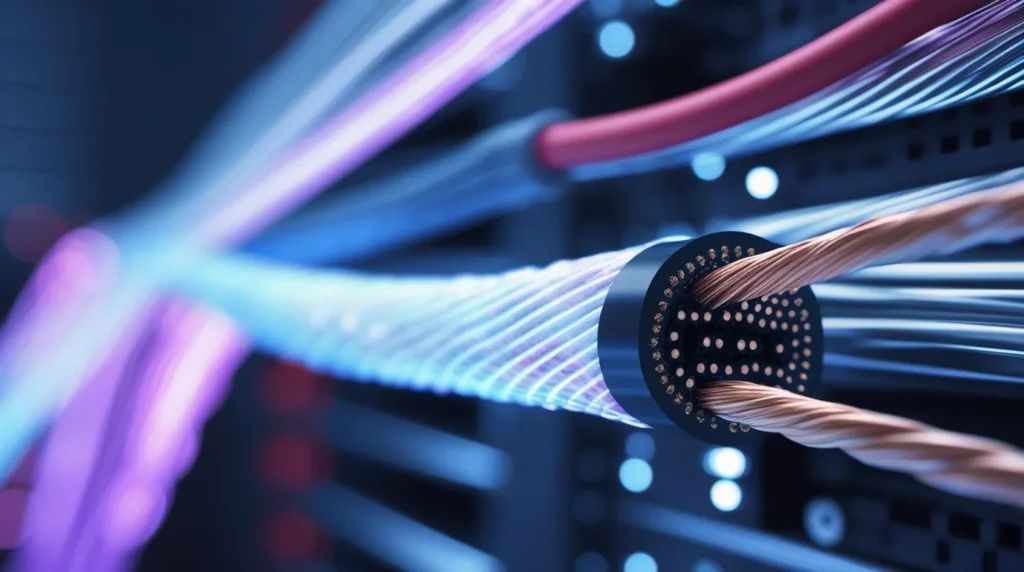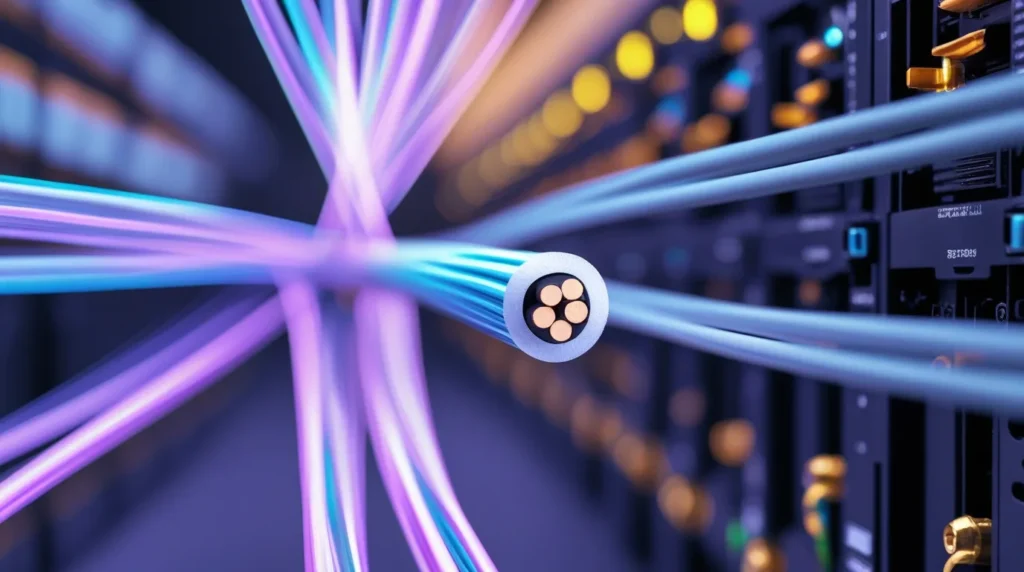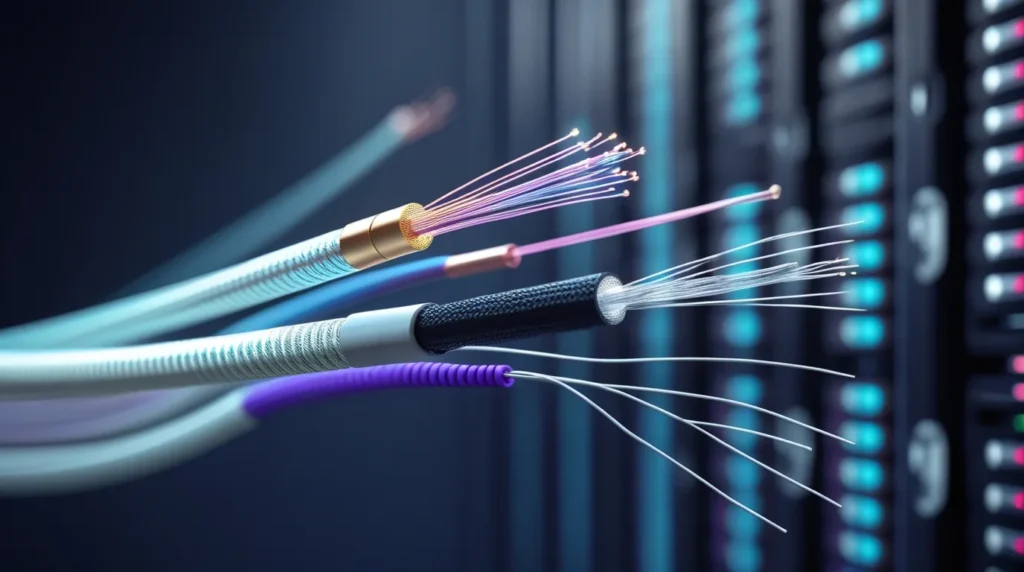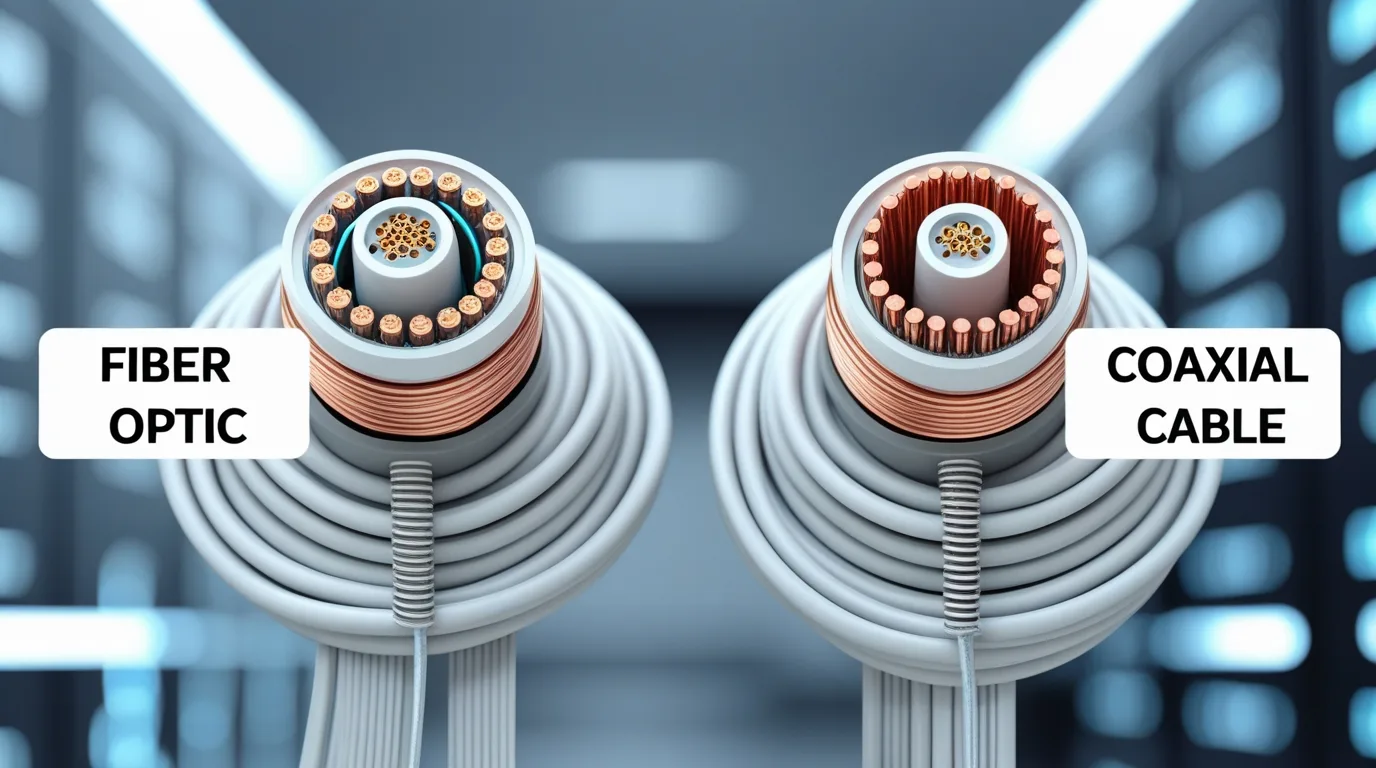Introduction: The Backbone of Modern Connectivity
In today’s world, everyone needs fast internet. Whether you’re at school, work, or just watching your favorite videos, the type of cable you use matters. One big comparison people talk about is fiber optic vs coaxial cable. These are two different kinds of cables that help bring the internet to our homes and businesses. Fiber optic cables use light to move data, while coaxial cables use electricity. Both can help you get online, but they work in different ways. In this article, we will help you understand each type and explain which one might be better for your needs.
Why Internet Infrastructure Matters in 2025
The Internet is more than just a luxury. It’s something we use for everything: online school, video calls, smart homes, and more. In 2025, having a strong and fast internet is even more important. This means that the way your internet is delivered to you is a big deal. Fiber optic and coaxial cables are two ways people get their internet. Some people use coax because it has been around longer. Others are switching to fiber because it is newer and faster. At Heritage Cabling, we help people choose the best cable for their homes or offices.
Fiber Optic vs Coaxial Cable: Key Differences at a Glance
Fiber optic cables and coaxial cables have a few key differences:
- Speed: Fiber is usually much faster.
- Material: Fiber is made of glass or plastic, while coax has a copper core.
- Data Travel: Fiber uses light; coax uses electricity.
- Interference: Fiber is better at avoiding problems from electrical signals.
- Cost: Coax is often cheaper to install but slower over time.
Each one has good and bad points. It really depends on what you need the cable to do and how fast you need your internet to be.

Understanding Fiber Optic Cable: Speed, Bandwidth, and More
Fiber optic cable sends data using light. It travels through tiny glass strands called optical fibers. This light moves very fast and can carry a lot of data. That means fiber can deliver high-speed internet to many users at the same time.
Some of the best things about fiber are:
- High bandwidth
- Low signal loss over long distances
- No trouble from electrical interference
People who use fiber internet enjoy smooth video streaming, fast uploads and downloads, and strong connections for online gaming. In busy places like offices and schools, fiber is a top choice.
Coaxial Cable Technology: Still Relevant or Outdated?
Coaxial cable is older technology but still works for many homes. It has a copper center wire, which sends electrical signals. Around that is a layer to protect the signal from interference.
While coax is not as fast as fiber, it still offers decent speed for:
- Streaming TV shows
- Browsing the internet
- Making video calls
Coaxial cable advantages include being easier to install and already being available in many buildings. But it can slow down when many people use the internet at the same time. For light users, it can still be a good choice.

Bandwidth and Performance: Which Cable Delivers More?
Bandwidth means how much data you can send at once. Fiber optic cable speed is very high. It can carry large amounts of data over long distances without losing quality.
Coaxial cable maximum speed is lower. When lots of people in one area use the internet, the coax can slow down. This is known as a “shared connection.”
Fiber also provides a more reliable internet service, while coax may have delays or lag during busy hours. If you work from home or play online games, fiber is often the better choice.
Interference, Signal Loss, and Environmental Impact
One big difference between these cables is how they handle outside interference. Fiber optic cable does not use electricity, so it is not affected by other electrical signals. This makes it perfect for areas with lots of devices.
Coaxial cables use electricity, so they can have problems with electromagnetic interference. That means your signal might be weaker if there are many wires nearby.
Also, signal degradation happens faster with coax than with fiber. Over long distances, coax gets slower. Fiber keeps its speed much better over time and space.
Installation and Maintenance: Which Is Easier to Deploy?
Installing coax is simple. It’s been used in homes for many years, so there is often no need for major upgrades.
Fiber, on the other hand, needs new equipment and setup. It takes a little more time and cost to install. However, fiber optic internet often needs fewer repairs in the long run.
Coax might need more maintenance if the cables get damaged or worn out. Fiber is stronger against the weather and long-term wear.

Cost Comparison: Upfront Investment vs Long-Term Value
Coaxial cable is cheaper to install. This makes it a good option for people who want the internet without spending a lot at first.
But fiber optic is better in the long run. It gives faster speeds, fewer issues, and better performance. This means you may save money over time by avoiding repairs and slow service.
Also, using fiber may increase your home’s value. If you plan to sell your home someday, having high-speed internet could be a big plus.
Choosing the Right Option for Your Network in Dallas, TX
In Dallas, people use the internet for all kinds of reasons. Some need it for business, some for school, and some just to relax and watch shows. So, how do you choose?
- Pick fiber if you need high speed, no interruptions, or if many people use the internet in your home.
- Pick Coax if you need a more affordable, easy-to-set-up option for basic browsing or streaming.
At Heritage Cabling, we help Dallas residents decide which setup works best. We understand the city’s needs and provide expert installation for both fiber and coax.
Final Thoughts from the Experts at Heritage Cabling
Both fiber optic cable and coaxial cable can bring the internet to your home. But one may work better for your needs. Fiber is faster and more reliable. Coax is easier to get and cheaper. If you’re still unsure, talk to a local expert who understands the differences and can guide you.
Heritage Cabling has worked with families and businesses across Texas, helping them stay connected. Whether you’re building a new space or upgrading an old one, we have the right tools, experience, and team to get the job done right.
Want faster internet and better connections? Contact us today for a free consultation. We’ll help you find the best cable option and get your network up and running without hassle.




